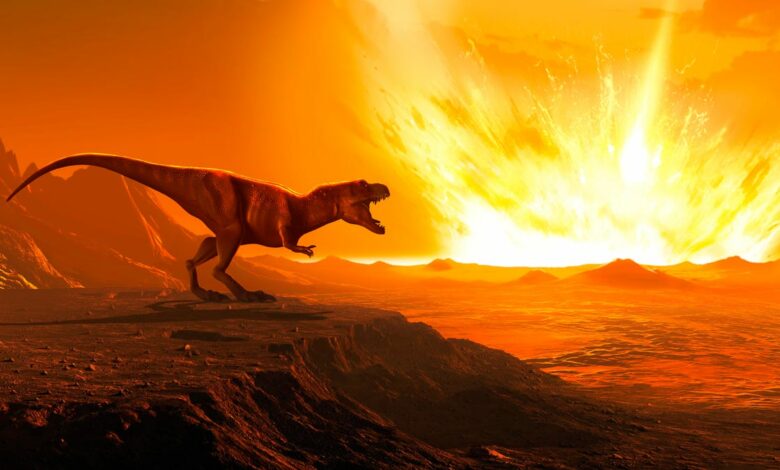Origin of the dinosaur-killing asteroid: Scientists now think they know where it came from

Asteroids, volcanic eruptions and poisonous plant species: the extinction of the dinosaurs has been a hot topic for decades. But researchers have found hard evidence that an asteroid impact had a huge effect on Earth’s climate, along with asteroid-specific minerals such as iridium at the crater in Chicxulub, Mexico, all but proving the asteroid theory.
And now scientists have discovered where the asteroid likely came from: it wasn’t even close. Research led by Mario Fischer-Gödde of the University of Cologne in Germany, suggests that the asteroid came from beyond Jupiter, far in the outer reaches of our solar system.
The research paper, published Thursday in the journal Science, identified it as a C-type asteroid. These are known as a carbonaceous meteor and are the most common of the outer solar systemType C meteors are exceptionally old and their composition can teach researchers more about the early history of our solar system.
Discover where the meteorite came from
To figure this out, scientists had to go through a series of steps. When the meteorite struck Earth, it pulverized rock and launched it into the air. This giant dust cloud, which contained material from both Earth and the meteorite, lowered the Earth’s temperature and wiped out most existing species. That dust eventually settled, where it would become a layer of rock that scientists could excavate tens of millions of years later.
Geologists refer to this very thin layer as the K-Pg layer, which describes the time when the Cretaceous ends and the Paleogene begins. It was around this time, 66 million years ago, that the asteroid was thought to have struck.
Researchers excavated samples from the K-Pg layer and discovered rutheniuman element rarely found on Earth but abundant in carbonaceous meteorites. The isotopes, or atoms, found in the ruthenium matched those found in ruthenium in other carbonaceous meteorites, proving that it came from a meteorite and not from Earth.
To be sure, researchers also compared it to material found in other large meteorite impacts and found no matches. This means that the ruthenium found in the K-Pg layer came from the same meteorite that hit Chicxulub.
How does this fit with the theory that an asteroid killed off the dinosaurs?
According to the theory, a 6-mile-wide meteor crashed into Earth near present-day Chicxulub on the Yucatan Peninsula. The impact launched vaporized rock and debris into the air, blanketing the planet in a cloud of dust that caused temperatures to drop by about 50 degrees Fahrenheit (28 degrees Celsius). This caused a long winter that wiped out non-avian dinosaurs, along with 70 percent of all life on Earth.
Eventually the dust fell back to Earth, where it the K-Pg rock layer was formedand then other things were piled on top of that which also became rocks. Whatever happened when the K-Pg layer was created, it certainly killed the dinosaurs, because no fossils of non-avian dinosaurs were once found above the K-Pg layer.
Researchers have found lots of stuff in the K-Pg layer, including iridium and chromium. Iridium is rare on Earth but common on asteroids, so when they iridium in the 80’shelped solve the puzzle of what killed the dinosaurs. Chromium, on the other hand, is very common on Earth, so it could not be correlated with a meteorite impact.
Later, scientists found more evidence in the form of sulfur in the K-Pg layer, but not in the impact crater, suggesting that the impact launched sulfur into the atmosphere, which certainly contributed to the global cooling. Sulfur was found in rocks as far away as Antarctica, showing the force of the meteorite impact.
We now come to today. As Fischer-Gödde explained to MashableRuthenium is quite difficult to detect and it required some technological advancement to do so. So the team measured five samples of the K-Pg layer and discovered that the ruthenium of all five samples likely came from the same source. They also found that the isotopes matched those of carbonaceous meteorites that had been previously analyzed.
In summary, the meteorite that hit Earth and wiped out the dinosaurs probably occurred billions of years ago as part of the earliest history of the solar system. It is not something that happened nearby, like most meteorite impacts.




